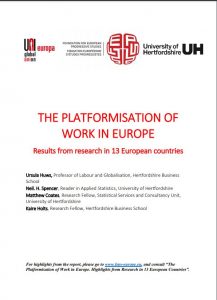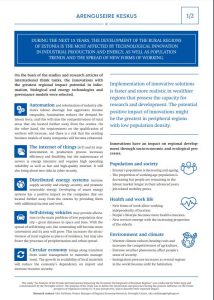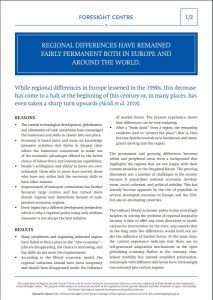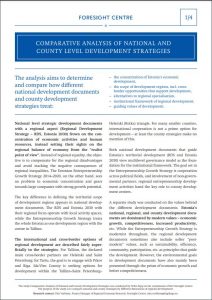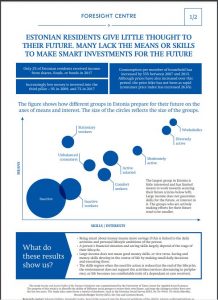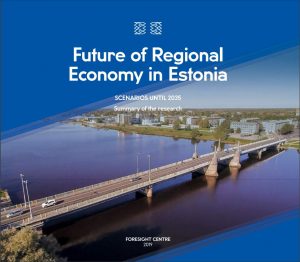8.1% of Estonians regularly work via online platforms.
Reports
The study presents an overview of key global innovations and processes, and describes their presumable regional impact in Estonia.
Regional inequality is on the rise in developed world, but also in many developing countries.
The qualitative thematic analysis comprises six topics: regional economic concentration; territorial scope of economic regions; regional specialization; international and cross-border opportunities for regional development; institutional framework for regional development; values guiding development. The analysis focuses on the normative component in strategies and applied research ─ what is considered to be normal and/or desirable future state of affairs.
Estonian residents give little thought to their future. Many lack the means or skills to make smart investments for the future.
People will have more responsibility for their welfare in the old age. Ways of coping that are not part of the national pension system become important.
This paper has illustrated main characteristics and tendencies for Estonian firms’ network and analyzed main factors that influence the emergence and persistence of trading relationship between firms.
This report analyses the values of Estonian society. Values are viewed here as the desirable goals which people strive to attain. Values guide the selection or evaluation of actions, policies, people, and events. We see them as a component of human capital – the characteristics of people that make a contribution to the development of a country, national economy and life satisfaction. The report provides an outline of the current state and recent changes of major Estonian values, in comparison to other European countries. Predictions about future value trends are also included.
Estonian regional policy has set out to implement the potential based on regional identity. So far, however, this has not been able to reverse the increasing concentration of economic activities into metropolitan regions.

 An independent think tank at the Riigikogu
An independent think tank at the Riigikogu 